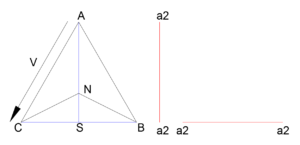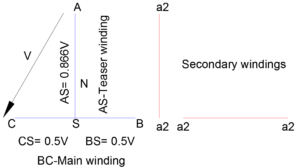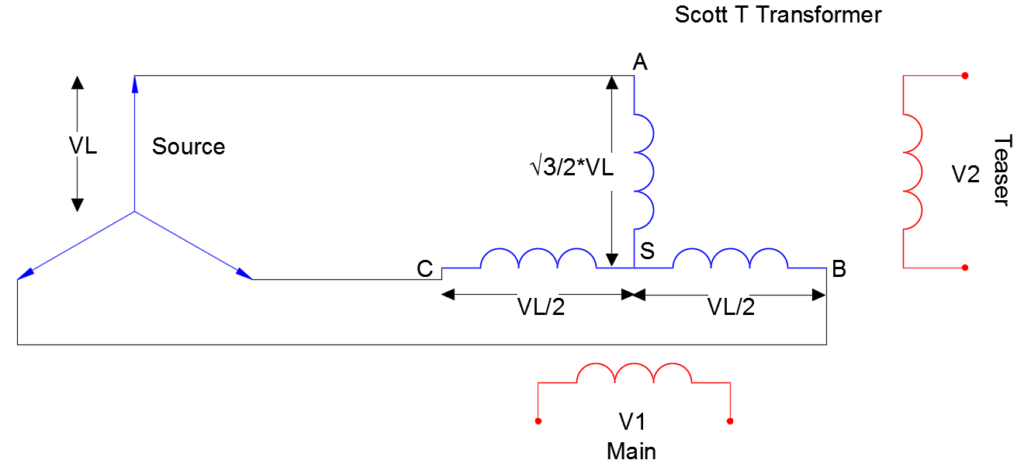Scott connection is a method of achieving 3 phase to 2 -phase transformation by using two single-phase transformers.

SCOTT T TRANSFORMER APPLICATION
Some of the reasons to convert three-phase to two-phase are:
- Connect a two-phase system with a three-phase system.
- Power to single phase electric rail engines.
- etc
Scott-T Transformer Theory
Consider the figure below. The primary windings form the delta-connected three-phase bank represented by the lines AB, BC and CA. The point S on the winding is the midpoint of winding BC. The primary windings are each given a single secondary winding, to form a three- to two phase bank. The secondary windings are represented by lines a1-a2 and b1-b2.

Scott T Transformer

Scott T Transformer Winding Voltage
Figure 1
Transformer BC is known as the ‘main’ transformer and AS is known as the ‘teaser’ transformer. ABC is an equilateral triangle and AS can be calculated to be equal to √3/2 (=0.866) times the each side.
Voltage across main transformer (Vm) = V
Voltage across teaser transformer (Vt) = 0.866V
Current in main transformer= 1000*KVA/sqrt(3)*V
Current in the teaser transformer = 1000*KVA/sqrt(3)*V
SCOTT-T VOLTAGE DISTRIBUTION ON THE PRIMARY WINDING
The figure below shows the voltage distribution on the primary winding on connecting three phase AC source to the primary winding of a Scott connection transformer.

Scott T Transformer Voltage Distribution
